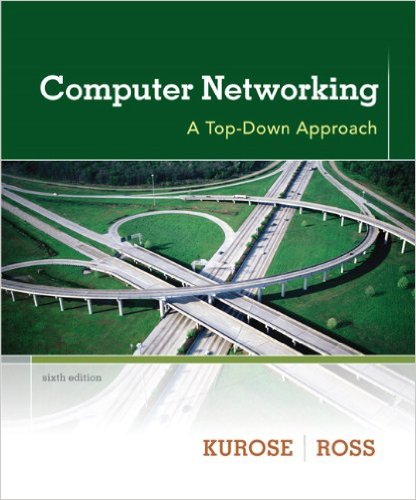Course Objectives
This undergraduate-level covers many technical issues in computer networking, including mobile networking, multimedia, security, network management, peer to peer networking, and backbone networks.
Intended Learning Outcome
Students would obtain an advanced knowledge on computer networking. They also learn about network simulators and learn different techniques for network and web programming.
Slides
- Introduction to Course: Introduction to IT Engineering Course, Course Organization/Contents, Textbooks.
- Wireless and Mobile Networks I: Introduction to Mobile Networks, Wireless links Characteristics, CDMA, IEEE 802.11 wireless LANs (Wi-Fi).
- Wireless and Mobile Networks II: Cellular Internet Access architecture standards (e.g., GSM), Mobility: Principles: addressing and routing to mobile users, Mobile IP, Handling mobility in cellular networks, Mobility and higher-layer protocols.
- Network Technologies I (Wired and Wireless LANs): LAN Components, Wired Ethernet, Wireless Ethernet, The Best Practice LAN Design, Improving LAN Performance.
- Network Technologies II (Backbone Networks): Components of Backbone networks (Switches, Routers, Gateways), Backbone network architectures, Best practice backbone design, Improving backbone performance, Implications for Management.
- Network Simulations: Introduction to ns-2, ns-2 Components, Create a Basic ns-2 Model, Case Study: WiFi Simulation, Simulation Results Analysis (Traces and NAM).
- Peer to Peer Networking: P2P Architecture, BitTorrent, and DHT.
- Multimedia Networking I: Multimedia networking applications, Streaming stored video.
- Multimedia Networking II: voice-over-IP, FEC, Skype.
- Multimedia Networking III: Protocols for real-time conversational applications (RTP, RTSP, RTCP, and SIP), H.323
- Multimedia Networking IV: Network support for multimedia (DiffServ and RSVP)
- Network Security I: Introduction to network security?, Principles of cryptography, Symmetric and Asymmetric-key encryption, RSA.
- Network Security II: Message integrity and End-Point Authentication, MAC, HMAC, Digital Signature.
- Network Security III: Securing e-mail (PGP), Securing TCP connections: SSL.
- Network Security IV: Network layer security: IPsec, Securing wireless LANs, Operational security: firewalls and IDS.
- Network Management: Introduction to network management, The Infrastructure for Network Management, Internet-standard management framework, Structure of Management Information: SMI, Management Information Base: MIB, SNMP Protocol Operations and Transport Mappings, Security and Administration, The Presentation Problem: ASN.1.
Books
Computer Networking: A Top-Down Approach (6th Edition) 6th Edition, by J. Kurose and K. Ross
 Computer Networking continues with an early emphasis on application-layer paradigms and application programming interfaces (the top layer), encouraging a hands-on
experience with protocols and networking concepts, before working down the protocol stack to more abstract layers. This book has become the dominant book
for this course because of the authors' reputations, the precision of explanation, the quality of the art program, and the value of their own supplements.
Computer Networking continues with an early emphasis on application-layer paradigms and application programming interfaces (the top layer), encouraging a hands-on
experience with protocols and networking concepts, before working down the protocol stack to more abstract layers. This book has become the dominant book
for this course because of the authors' reputations, the precision of explanation, the quality of the art program, and the value of their own supplements.
Business Data Communications and Networking, 11th Edition, by Jerry FitzGerald
 Over the past few years, many fundamental changes have occurred in data communications and networking that will shape the future for decades to come.
Updated with the latest advances in the field, Jerry FitzGerald and Alan Dennis' 11th Edition of Business Data Communications and Networking continues
to provide the fundamental concepts and cutting-edge coverage of applications that students need to succeed in this fast-moving field. Authors FitzGerald
and Dennis have developed a foundation and balanced presentation from which new technologies and applications can be easily understood, evaluated,
and compared.
Over the past few years, many fundamental changes have occurred in data communications and networking that will shape the future for decades to come.
Updated with the latest advances in the field, Jerry FitzGerald and Alan Dennis' 11th Edition of Business Data Communications and Networking continues
to provide the fundamental concepts and cutting-edge coverage of applications that students need to succeed in this fast-moving field. Authors FitzGerald
and Dennis have developed a foundation and balanced presentation from which new technologies and applications can be easily understood, evaluated,
and compared.
